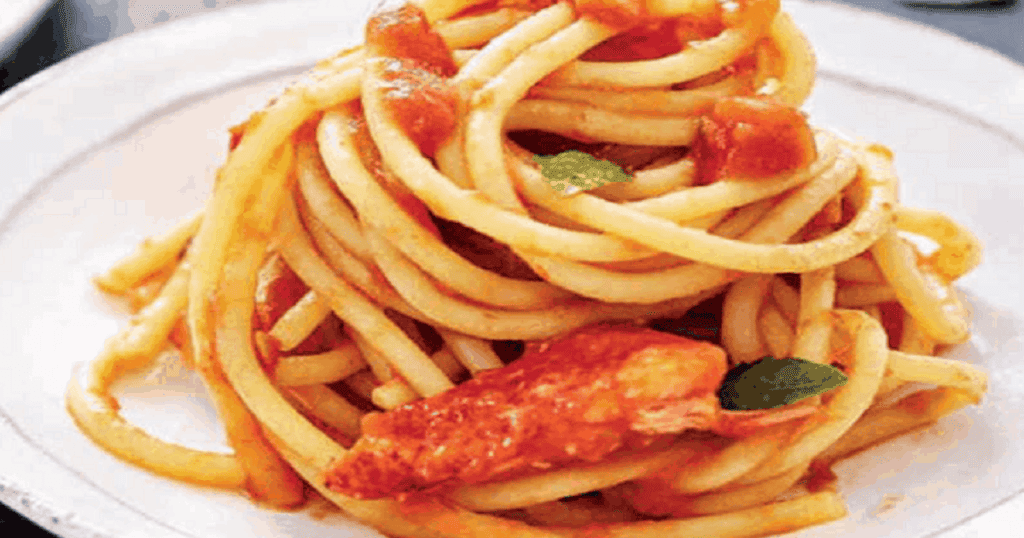When I set out to master Gordon Ramsay’s Bolognese sauce, I learned that a recipe is more than just a list of ingredients carefully crafting something special. In my experience, one key mistake, forgetting to simmer the sauce lovingly, resulted in a more rushed Bolognese than rich. The slow dance of flavors melding on the stovetop makes all the difference.
Remember this: a splash of milk smooths out the acidity, and that dash of wine isn’t just for the pan. It awakens the depths of tomato and meat to a full ensemble of taste. So, take your time, let the sauce thicken to perfection, and your pasta will sing with the notes of an authentic Italian kitchen. This is more than supper; it’s a slice of culinary heaven, ready to enchant every plate it graces.
What’s Bolognese Sauce Made Of?
Bolognese sauce, also known as ragù alla bolognese, is a meat-based sauce from Bologna, Italy. It typically contains a combination of ingredients that include:
- Ground meat (usually a mixture of beef and pork)
- Onion, carrot, and celery (soffritto)
- Tomato paste or tomatoes
- Red or white wine
- Milk or cream
- Olive oil or butter
- Salt and pepper
- Optionally, herbs like thyme, bay leaves, or oregano
What is the Difference Between Bolognese Sauce and Spaghetti Sauce?
“spaghetti sauce” is generally used in American cuisine and can refer to any sauce served with spaghetti. It’s often a simple tomato-based sauce seasoned with herbs and garlic. In contrast, Bolognese sauce is a specific Italian meat sauce with a more complex flavor profile. It includes soffritto (onion, carrot, and celery) and meat and is simmered with milk and wine, which is not typical for most American-style spaghetti sauces.
How Do You Get Rich Flavor in Bolognese?
To achieve a rich flavor in Bolognese sauce, follow these tips:
- Sauté the Soffritto: Cooking the onions, carrots, and celery slowly until soft brings out their sweetness.
- Brown the Meat: Properly browning the meat, not just cooking it until it is no longer pink, adds depth to the flavor.
- Deglaze with Wine: Adding wine to the pan and scraping up the browned bits adds complexity to the sauce.
- Cook Slowly: Let the sauce simmer at a low temperature for several hours. This slow-cooking process melds the flavors together and tenderizes the meat.
- Use Quality Tomatoes: High-quality canned tomatoes or tomato paste can make a significant difference.
- Finish with Dairy: Adding milk or cream near the end of cooking can balance acidity and enrich the sauce.
Why Do Italians Add Milk to Bolognese?
Italians add milk to Bolognese sauce for a few reasons:
- Richness: Milk adds a creamy richness to the sauce, balancing the tomatoes’ acidity and the meat’s robust flavor.
- Tenderness: The milk proteins can help tenderize the meat during the long, slow cooking process.
- Depth of Flavor: Milk contributes to the complex flavor profile of the sauce, giving it a subtle sweetness and a smoother texture.
- Tradition: Adding milk is part of the traditional recipe from Bologna, and classic Italian cooking often adheres to these time-honored methods.
Summing Up
As we scoop the final spoonfuls of Gordon Ramsay’s Bolognese onto a bed of steamy pasta, it’s the perfect time to savor the accomplishment of crafting such a rich, flavor-packed sauce. This kind of home-cooked meal, brimming with love and the finest tips from Chef Ramsay himself, turns a simple dinner into a treasured family moment.
So, gather around, pass the Parmesan, and delight in a dish that’s more than just food. It’s a warm embrace for your taste buds, a true celebration of the joy of cooking with heart. Remember, every fork swirl is a testament to the art of great cuisine made accessible in your kitchen. Enjoy the feast!
Last Updated on February 4, 2024 by John Siracusa




